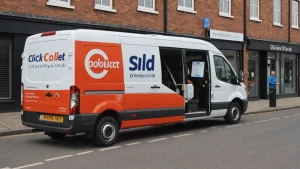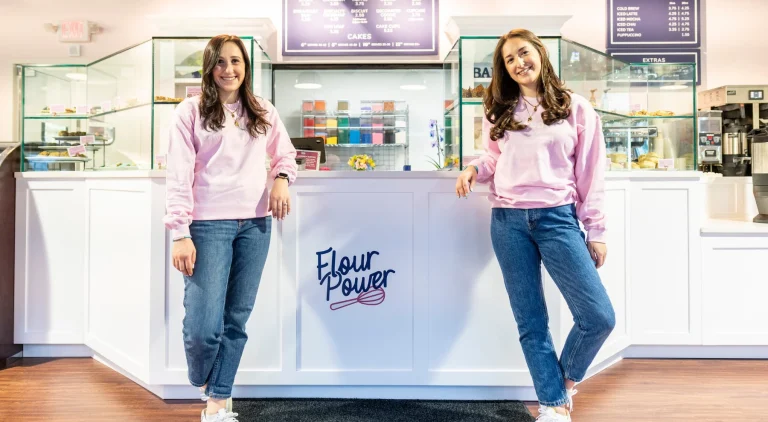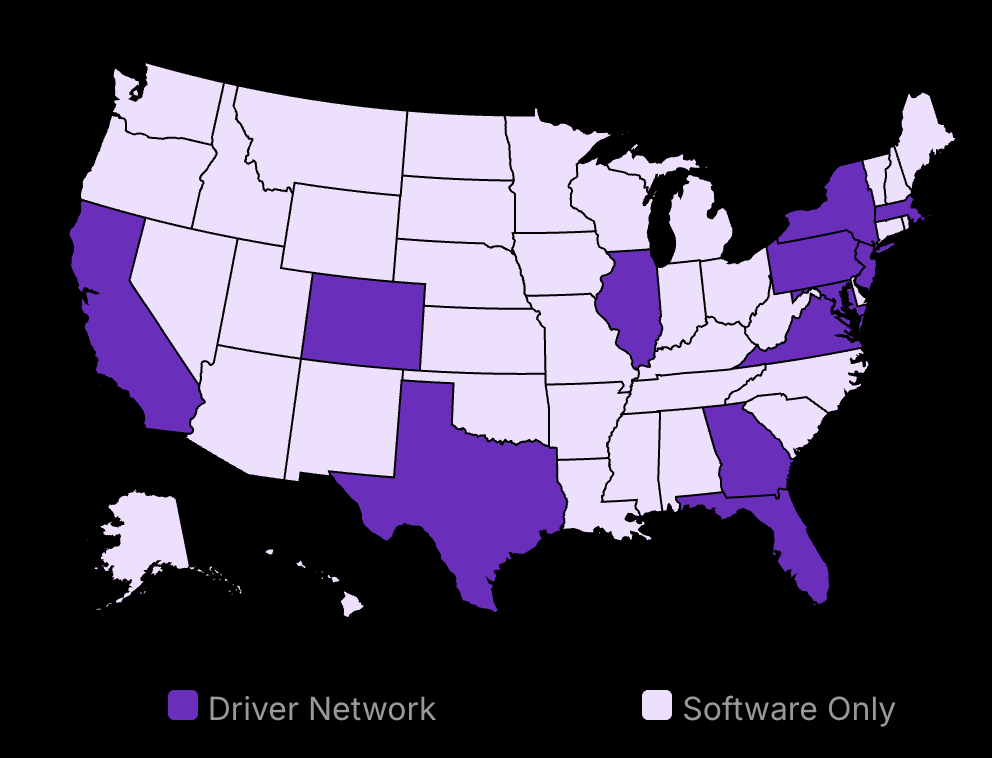Small business owners, like many other business owners I speak with, I have a question for you: What if your advertising budget, even a small budget, is the exact size it needs to be right now?
I know—that goes against everything you’ve heard. “Spend more to make more” is the standard advice when spending money on marketing efforts. But here’s what twenty years of data tells us: it’s not how much you spend, but how smart you spend it.
This gap isn’t just a problem—it’s your opportunity.
I’ve watched small coffee shops engage their local community and outperform national chains in local markets, driving significant foot traffic. I’ve seen family-owned hardware stores attract customers and capture more digital traffic than big-box retailers. The common thread? They all applied straightforward, data-backed advertising approaches designed to increase brand awareness effectively and fit their specific needs.
The five strategies I’ll share below don’t require a marketing department or a massive budget. They focus on reaching your target market effectively. What they do require is a willingness to let data about your current customers and prospective customers—not guesswork—guide your decisions.
The truth about small business advertising is refreshingly simple: You don’t need to outspend the competition. You need to outsmart them.
And that starts with understanding which advertising efforts, including finding the right cost effective marketing tool mix, actually drive results for businesses your size.
Ready to stop wasting money on advertising that doesn’t work when you promote products or services? These five smart small business advertising strategies will show you exactly where to focus your efforts for maximum impact.

Save 80% of delivery management time
We handle everything:
- Dedicated operations manager
- Real-time tracking dashboard
- Automated customer notifications
- Urgent issue resolution
1. Targeted Local Marketing Approaches Including Direct Mail
Local advertising reaches your target customers efficiently
Data-driven local strategies deliver higher ROI for small businesses
Community-focused marketing builds lasting customer relationships
Step 1: Identify Your Local Audience Through Community Events
Knowing exactly who your local customers are forms the foundation of any effective small business marketing strategy. Local audience identification requires methodical research and community engagement. For small businesses, the advantage lies in their closeness to the community and ability to gather firsthand information about customer preferences.
The first practical approach is attending local events where your potential customers gather. These include farmers markets, chamber of commerce meetings, community festivals, or industry-specific gatherings. Bring business cards and perhaps a simple survey to collect contact information. The goal isn’t just promotion but genuine listening – what problems do locals face that your business might solve? What current solutions frustrate them? This direct interaction provides qualitative data that digital analytics alone cannot capture.
Digital Community Mapping
Social media platforms offer powerful ways to understand your local audience. Facebook Groups centered around your community often reveal common interests, complaints, and needs. Join these groups as a business representative (following group rules) and observe discussions before actively participating.
Local social media data reveals:
Common questions and problems in your community
Competing businesses and customer opinions about them
Events and topics that generate excitement
Language patterns and terminology used by potential customers
This data confirms the importance of maintaining an active online presence where locals can find you.
Creating Customer Personas
After gathering information, create detailed profiles of your typical local customers. These personas should include:
Age range and gender distribution
Income level and spending habits
Neighborhood or areas where they live
Educational background
Family status
Primary concerns or pain points
Media consumption habits
Shopping preferences (online vs. in-store)
For example, a specialty coffee shop might discover their primary audience consists of professionals ages 25-40 who value convenience, quality, and supporting local businesses. They’re active on Instagram, live within a 3-mile radius, and often work remotely.
Step 2: Customize Advertising Materials
With clear audience profiles established, the next step involves adapting your advertising to speak directly to local interests and needs. Generic advertising materials fail to create connections with local customers who want to know how your business fits into their community.
Location-specific language matters significantly in local advertising. Instead of generic phrases like “best service in town,” reference specific neighborhoods, landmarks, or local challenges. For example, a plumber in a flood-prone area might advertise: “Basement flooding solutions for North Side residents” rather than “Water damage experts.”
Visual elements should reflect the local environment and community members. Use photos featuring:
Recognizable local settings
People who represent your actual customer base
Local landmarks or distinctive features
Seasonal elements specific to your area’s climate
Local Partnerships and Influencers
Collaborating with local influencers has become a key trend in 2025 marketing strategies. Unlike national celebrities, local influencers offer authenticity and direct community connections. These might include:
Local news personalities
Community organizers or advocates
Well-known business owners
Popular social media creators with local followings
When approaching potential partners, focus on mutual benefit rather than one-sided advertising. A coffee shop might partner with a local morning show host for authentic promotion, while a bookstore could collaborate with local authors or reading groups.
The effectiveness of these partnerships stems from trust transfer – when a respected community member recommends your business, their credibility enhances your brand perception. Small businesses should budget for these relationships while ensuring authenticity in all collaborations.
Community-Specific Offers
Your promotional offers should address specific local needs or preferences. This requires:
Creating time-limited promotions tied to local events
Developing service packages that solve common local problems
Offering neighborhood-specific discounts or loyalty programs
Designing products named after local features or landmarks
For example, a restaurant might create a special menu during the local high school’s football season, or a hardware store could offer “Spring Gardening Workshops” tailored to the specific growing conditions in your region.

Step 3: Leverage Local SEO and Your Google Business Profile
Search engine optimization with a local focus remains essential for small businesses in 2025. When implemented correctly, local SEO ensures your business appears prominently when nearby customers search for relevant products or services.
Local Presence Significance: 64% of small businesses have a local SEO presence, highlighting the importance of local search optimization.
Local Search Frequency: 80% of US consumers search online for local businesses weekly, and 32% search daily, emphasizing the need for local online visibility.
The rise of “near me” searches presents a tremendous opportunity for small businesses. These searches demonstrate high purchase intent – someone looking for “coffee shop near me” is likely ready to visit immediately. To optimize for these searches:
Claim and complete your Google Business Profile with accurate information
Regularly update your business hours, especially during holidays
Add high-quality photos of your location, staff, and products
Respond promptly to all customer reviews, both positive and negative
Add your complete address to your website’s footer and contact page
Google Profile Impact: Customers are 70% more likely to visit and 50% more likely to consider purchasing from businesses with a complete Google Business Profile.
Local Search Conversion: 28% of local searches result in a purchase within 24 hours, underscoring the importance of local SEO.
The data confirms this approach – personalization is increasingly focused at the local level, with businesses finding success by tailoring messages for specific neighborhoods and demographics.
Local Keyword Implementation
Incorporating location-based keywords throughout your online content helps search engines understand your relevance to local searches. Effective implementation includes:
Adding city, neighborhood, and regional terms to page titles and headings
Creating content about local events or issues
Including location terms in image alt text and descriptions
Publishing articles addressing questions specific to your locale
For example, a pet store might create content titled “Best Dog Parks in [City Name]” or “How to Protect Pets from [Local Weather Challenge].”
Local landing pages for different service areas also boost your visibility. A landscaping company might create separate pages for each neighborhood they serve, with content addressing specific landscaping challenges in those areas.
Building Local Citations and Your Business Listing
Local citations are mentions of your business name, address, and phone number across the internet. Consistent citations build search engine trust and improve rankings. Important citation sources include:
Local business directories
Chamber of commerce websites
Industry-specific directories
Local news sites
Community event listings
When building citations, ensure your business information appears exactly the same across all platforms – inconsistencies can harm your search rankings and confuse potential customers.
SEO Outsourcing Trend: 40% of small businesses outsource some or all of their local SEO work, indicating the complexity of SEO management.
The best marketing strategy for small businesses combines these targeted local approaches with consistent implementation and measurement. Rather than attempting to reach everyone, successful small businesses focus their limited resources on deeply connecting with their immediate community. This strategy addresses the core question of “what is the best marketing strategy for small businesses” by emphasizing focused effort over broad reach.
As you refine your local marketing strategy, remember that data should drive decisions. Track which local events generate the most leads, which neighborhood-specific offers perform best, and which local keywords bring quality traffic to your website. This information will help you allocate resources effectively while building meaningful community connections.
2. Cost-Effective Digital Advertising Techniques
Learn how to maximize ad spend through targeted social media campaigns
Discover practical PPC strategies that fit small business budgets
Master email marketing techniques that drive customer engagement
Digital advertising offers small businesses powerful ways to connect with customers without breaking the bank. When executed correctly, these techniques deliver measurable results and strong returns on investment. Let’s explore three key approaches any small business can implement today.
Step 1: Utilize Social Media and Facebook Advertising
Social media platforms provide some of the most cost-effective advertising options for small businesses. With precise targeting capabilities and flexible budgets, these platforms help you reach potential customers where they already spend time.
Social Media Adoption: 85% of small businesses use social media for advertising, with 96% choosing Facebook as their main platform.
Selecting the Right Platforms
Begin by identifying where your target audience spends most of their time online. Each social media platform attracts different demographics:
Facebook: Broad age range (25-65+), good for local businesses
Instagram: Younger audiences (18-34), visual products/services
LinkedIn: Professional audiences, B2B services
TikTok: Gen Z and younger millennials (16-30)
Pinterest: Predominantly female users interested in DIY, recipes, fashion
Research which platforms your competitors use successfully. Check which social channels your existing customers mention when interacting with your business. Focus your efforts on 2-3 platforms instead of spreading resources too thinly across all available options.
Creating Effective Ad Content
Once you’ve selected your platforms, create content that grabs attention and drives action:
Use high-quality visuals that stand out in crowded feeds
Bright colors that align with your brand
Clear, readable text (keep to 20% or less of image area)
Real people/products rather than generic stock photos when possible
Write compelling copy that speaks directly to your audience
Address specific pain points your product/service solves
Keep messages concise (40-125 characters performs best)
Include a clear call to action (Shop Now, Learn More, Sign Up)
Test different ad formats on each platform
Carousel ads to showcase multiple products
Video ads (15-30 seconds) for higher engagement
Story ads for time-sensitive offers
Setting Up Targeted Campaigns
The power of social media advertising lies in its targeting capabilities:
Geographic targeting: Focus on specific neighborhoods, cities, or regions where your customers live
Demographic targeting: Select age ranges, income levels, and other relevant characteristics
Interest-based targeting: Target people based on their demonstrated interests and behaviors
Lookalike audiences: Find new customers who share similarities with your existing customers
Start with small daily budgets ($5-20 per day) to test which combinations work best. Most platforms allow you to set lifetime budgets to prevent overspending. Monitor performance regularly and adjust targeting parameters based on results.
Step 2: Implement Pay-Per-Click PPC Campaigns
PPC advertising lets you place ads on search engines and websites while only paying when someone clicks on your ad. This makes it one of the most cost-effective digital marketing channels for small businesses.
PPC Return: Nearly two-thirds of small businesses report earning $5 for every $1 spent on PPC ads, making it a reliable strategy.
Getting Started with Google Ads
Google Ads remains the most popular PPC platform due to Google’s massive search volume. Here’s how to set up your first campaign:
Create a Google Ads account and link it to Google Analytics
Research keywords related to your business
Use Google’s Keyword Planner to find relevant terms
Focus on specific long-tail keywords (e.g., “affordable plumber in Atlanta” rather than just “plumber”)
Check keyword competition and suggested bid prices
Organize keywords into themed ad groups
Write compelling ad copy that includes your keywords
Create at least 2-3 variations to test different messages
Include location information for local businesses
Highlight unique selling points (free shipping, same-day service)
Set up conversion tracking to measure results
Budget Management Strategies
Small businesses need to be especially careful with PPC budgets:
Start with a conservative daily budget (typically $10-30 per day)
Set maximum bid limits for keywords to prevent overspending
Schedule ads to run only during business hours or peak times
Use geo-targeting to focus spending on your service areas
Create separate campaigns for different product/service lines with individual budgets
Monitor your cost-per-click (CPC) and cost-per-acquisition (CPA) metrics weekly. If a campaign costs more to acquire customers than those customers are worth, adjust your targeting or pause the campaign.
Optimizing Ad Performance
PPC success requires ongoing optimization:
Review search term reports weekly to find new keywords and exclude irrelevant terms
Test different ad headlines and descriptions to improve click-through rates
Create specific landing pages for each ad group that match the ad’s message
Add negative keywords to prevent your ads from showing for irrelevant searches
Adjust bids based on device performance (mobile vs. desktop)
Implement ad extensions (location, call buttons, site links) to increase ad visibility
Remember that PPC results improve over time as you gather data. Give campaigns at least 2-4 weeks before making major changes, while still making minor adjustments weekly.
Step 3: Explore Email Marketing
This makes it ideal for small businesses with limited marketing budgets.
Email Marketing High ROI: Email marketing can provide an ROI as high as 4400%, or $44 for every $1 invested, showcasing its effectiveness.
Building Your Email List
Start by collecting email addresses through these methods:
Add sign-up forms to your website (homepage, blog posts, checkout page)
Create a valuable lead magnet (discount code, useful guide, free consultation)
Collect emails in-store using a tablet or sign-up sheet
Run social media contests that require email registration
Add email opt-ins to all customer transactions
Email Marketing Average ROI: For every $1 spent on email marketing, the average return is $36, demonstrating its high ROI.
Always follow email marketing laws like CAN-SPAM and GDPR by getting explicit permission to send marketing emails and including unsubscribe options in every message.
Creating Engaging Email Content
Effective email marketing starts with content that recipients actually want to open:
Write attention-grabbing subject lines (30-50 characters)
Use personalization when possible (recipient’s name or location)
Create a sense of urgency or curiosity
Avoid spam trigger words like “free,” “guarantee,” or excessive punctuation
Design mobile-friendly email templates
Single-column layouts work best on small screens
Use large, tappable buttons for calls to action
Keep file sizes small for quick loading
Focus on valuable content types:
Educational content that solves problems
Exclusive offers and promotions
New product announcements
Customer stories and testimonials
Behind-the-scenes looks at your business
Keep a consistent sending schedule so subscribers know when to expect your emails. Test different sending times to find when your audience is most responsive.
Segmenting Your Email Lists
One of email marketing’s greatest strengths is the ability to send different messages to different groups:
Segment by customer behavior
Recent purchasers vs. inactive customers
Product categories they’ve shown interest in
Website pages they’ve visited
Segment by customer data
Geographic location
Purchase history and average order value
Sign-up source
Create automated email sequences for specific segments
Welcome series for new subscribers
Abandoned cart reminders
Post-purchase follow-ups
Re-engagement campaigns for inactive subscribers
Start with 2-3 basic segments and expand as your list grows. Even simple segmentation can significantly improve open rates, click-through rates, and conversions.
Email Personalization Impact: Emails personalized with recipients’ first names increase open rates by 2.6 percent, highlighting the value of personalization.
Most email marketing platforms provide built-in analytics. Use A/B testing to compare different subject lines, content approaches, and sending times. Make incremental improvements based on what the data tells you.
Email marketing tools like Mailchimp, Constant Contact, and SendinBlue offer free plans for small lists, making this an especially budget-friendly option for new businesses.

Step 4: Leverage Retargeting Campaigns
Retargeting (also called remarketing) shows ads to people who have already visited your website or interacted with your business. These campaigns typically see higher conversion rates since you’re reaching people already familiar with your brand.
Retargeting Cost Efficiency: Retargeted users are 8 times cheaper to reach per click, making retargeting a cost-effective advertising strategy.
Setting Up Basic Retargeting
To implement retargeting:
Install tracking pixels on your website
Google Ads remarketing tag
Facebook pixel
Platform-specific codes for other advertising networks
Create audience segments based on:
Pages visited (product pages, pricing pages)
Time spent on site
Actions taken (added to cart, started registration)
Time since last visit
Design ads specifically for people who know your brand
Remind them of products they viewed
Offer incentives to complete purchases
Highlight benefits they’ve already shown interest in
Retargeting Market Growth: The global retargeting software market is expected to reach $8.87 billion by 2029, reflecting its growing significance.
Start with a small daily budget ($5-10) as retargeting audiences are smaller but usually convert at higher rates.
Creating Effective Retargeting Funnels
Build multi-step retargeting sequences that guide potential customers toward conversion:
Initial retargeting (1-3 days after visit)
Remind visitors about products/services viewed
Focus on brand awareness and recognition
Middle-funnel retargeting (4-14 days)
Address common objections
Provide social proof (reviews, testimonials)
Offer additional information
Final conversion push (15-30 days)
Present time-limited offers
Provide incentives (free shipping, discount)
Create urgency for action
Set frequency caps to prevent showing the same ads too often, which can create ad fatigue and negative brand associations. Most platforms recommend limiting impressions to 3-4 per day per user.
Step 5: Experiment with Content Marketing for Free Advertising
Content marketing supports your paid advertising efforts by building audience relationships and improving organic visibility. While it requires time investment, it can significantly reduce your paid advertising costs over time.
Creating Budget-Friendly Content
Develop content that attracts your target audience:
Start a blog addressing common customer questions
Create short educational videos using just a smartphone
Develop downloadable guides or checklists
Share industry insights through simple infographics
Record a podcast discussing topics relevant to your customers
You don’t need professional equipment or production teams. Focus on providing genuine value through your expertise. One high-quality piece per week is better than daily low-quality content.
Promote your content through your existing channels:
Share on social media profiles
Include in email newsletters
Mention in conversations with customers
Amplifying Content with Paid Promotion
Use small advertising budgets to extend the reach of your best content:
Boost high-performing posts on Facebook or Instagram ($10-20 per post)
Use LinkedIn Sponsored Content for B2B-focused articles
Try YouTube pre-roll ads for video content
Test Twitter promoted posts for timely industry insights
Content promotion often costs less per click than direct product advertising while still building brand awareness and credibility. Monitor which content types generate the most engagement and leads, then create more similar content.
By combining these five cost-effective digital advertising approaches, small businesses can create comprehensive marketing strategies that deliver results without requiring large budgets. The key is starting small, testing different approaches, and consistently optimizing based on performance data.

3. Implementing Customer-Centric Advertising Ideas for Customer Loyalty
Create ad campaigns that genuinely address customer needs
Use customer data to personalize and improve ad performance
Build interactive elements that increase engagement and conversion
Step 1: Collect and Use Customer Feedback
Customer feedback forms the backbone of any customer-centric advertising approach. Small businesses have a unique advantage here—they can gather detailed insights from their relatively smaller customer base. When you understand what your customers actually want, you can create ads that speak directly to their needs.
Start by creating short surveys that take less than 5 minutes to complete. Focus on questions about customer pain points, preferences, and how they discovered your business. Use tools like Google Forms, SurveyMonkey, or Typeform to build professional surveys without technical skills. For best results, keep surveys to 5-7 questions, and always include at least one open-ended question where customers can share thoughts in their own words.
Email is your most direct survey distribution channel. Send a dedicated email with a clear subject line like “Help us serve you better (2-minute survey).” Include the estimated completion time and consider offering a small incentive like a discount code for participation. Aim for at least 100 responses to identify meaningful patterns in the data.
Analyzing Survey Results
Once you’ve collected responses, look for patterns in the data. Group similar feedback together and rank issues by frequency. Pay special attention to recurring themes in the open-ended responses—these often reveal insights you hadn’t considered asking about directly.
Next, create a feedback implementation plan. List the top 3-5 insights from your survey and brainstorm how each could influence your advertising. For example, if customers mention they value your fast shipping, make that a prominent feature in your next ad campaign.
Share relevant findings with your team and decide which insights to prioritize in your next advertising cycle. Document everything in a simple spreadsheet with columns for the insight, potential advertising application, and implementation timeline.
Step 2: Personalize Advertisements
Personalization transforms generic advertising into conversations that feel tailored to each customer. Small businesses can leverage their customer data to create ads that connect on a deeper level without large marketing budgets.
Personalization Revenue Impact: Personalization in marketing often drives a 10 to 15 percent percent revenue lift, with company-specific lifts ranging from 5 to 25 percent.
Start by segmenting your customer database into distinct groups based on purchasing behavior, demographics, or engagement level. Common segments include new customers, repeat buyers, high-value customers, and inactive customers. Each segment should receive different messaging that addresses their specific relationship with your business.
For new customers, focus ads on your value proposition and introductory offers. For repeat buyers, highlight loyalty benefits or exclusive products. For inactive customers, consider re-engagement campaigns that remind them why they chose you initially.
Creating Data-Driven Personalized Content
Use your customer database to identify patterns that can inform personalized offers. Look at purchase history to understand product preferences, buying frequency, and average order value. This information helps you craft relevant offers that match actual customer behavior.
For example, if data shows customers typically purchase products in pairs, create bundle offers that reflect this natural buying pattern. If certain customers consistently buy seasonal items, time your advertisements to reach them just before their expected purchasing window.
Customer testimonials provide powerful social proof in advertisements. Select authentic reviews that speak to the specific benefits you want to highlight for each customer segment. Pair these testimonials with targeted offers to create compelling personalized ads.
Step 3: Engage with Interactive Content
Interactive content transforms passive viewers into active participants. This engagement creates a two-way relationship that significantly improves ad performance for small businesses.
Interactive Content Engagement: Interactive content generates 52.6% higher engagement rates than static content, enhancing user interaction.
Start with simple interactive elements like polls or quizzes related to your products or industry. These tools gather valuable data while providing entertainment value. For example, a coffee shop might create a “What’s your coffee personality?” quiz that suggests products based on responses.
Tools like Typeform, Outgrow, or even Instagram Stories polls let you create interactive content without technical expertise. Keep your interactive content short—ideally completable in under 60 seconds—to maximize participation.
Designing Effective Interactive Campaigns
The most successful interactive campaigns balance entertainment with brand relevance. Start by identifying a topic that interests your audience and relates to your products. Then, create 5-8 questions that are fun to answer while subtly highlighting your product benefits.
For quizzes, design result categories that naturally connect to product recommendations. For polls, craft questions that provide valuable market research while engaging your audience. Always include social sharing options at the results stage to extend your reach.
To encourage sharing, make the results personally valuable or entertaining enough that participants want to share them. Results like “Your travel style reveals you’re an Adventure Seeker” with matching product recommendations give people content they want to share with their networks.
Step 4: Create Customer Journey-Based Ad Sequences
Different advertising messages work at different stages of the customer journey. By mapping your ads to specific points in this journey, you can deliver the right message at the right time.
Start by mapping your typical customer journey from awareness to purchase to loyalty. Identify the key decision points and information needs at each stage. For awareness, focus on problem recognition and educational content. For consideration, highlight product benefits and comparisons. For decision, emphasize testimonials and clear calls to action.
Building Sequential Ad Campaigns
Create a sequential ad campaign that guides potential customers through their journey. Use ad platform features like Facebook’s Campaign Budget Optimization to automatically allocate budget to the best-performing ads at each stage.
For awareness stage ads, use attention-grabbing visuals and headlines that identify a common problem. For consideration stage, show your product in action with specific benefit statements. For decision stage, include customer testimonials and limited-time offers to encourage immediate action.
To implement this effectively, use the same tracking pixel across all campaign stages. This ensures you can retarget users with the next appropriate message based on their previous interactions. Set up conversion tracking to measure which sequences perform best with different audience segments.
Step 5: Test and Refine Your Customer-Centric Approach
Customer-centric advertising is never finished—it requires ongoing testing and refinement based on performance data.
Implement A/B testing for all major ad elements. Test one variable at a time to clearly identify what impacts performance. Common elements to test include headlines, images, calls to action, and audience targeting parameters. Run tests for at least one week to gather sufficient data.
Document all test results in a testing log that includes the variables tested, performance metrics, and insights gained. Look for patterns across multiple tests to identify broader principles that work for your specific audience.
After collecting sufficient test data, implement a quarterly review process to update your customer-centric advertising strategy. Analyze which customer segments respond best to which approaches, and reallocate your budget accordingly.
Remember that customer preferences evolve over time. Repeat your feedback collection process at least twice yearly to ensure your understanding of customer needs remains current. Update your advertising approaches based on these refreshed insights to maintain relevance.
4. Measuring Advertising ROI for Small Businesses
Track which ads generate real business results, not just clicks
Use data to make smarter decisions about where to spend your ad budget
Save money by stopping campaigns that don’t work and scaling what does
Step 1: Set Clear Goals
Before measuring anything, you need to know what success looks like for your business. Setting clear, specific advertising goals is the foundation of effective ROI measurement. For small businesses with limited budgets, this step is even more crucial.
Start by defining what metrics matter most to your business. These could include:
Website traffic
Lead generation numbers
Conversion rates
Total sales
Cost per acquisition
Return on ad spend (ROAS)
Apply the SMART framework to each goal: Specific, Measurable, Achievable, Relevant, and Time-bound. For example, instead of “increase sales,” aim for “increase online sales by 20% through Facebook ads within the next quarter.” This specificity makes tracking progress and measuring success much clearer.
Creating a Goal Tracking System
Document your goals in a spreadsheet or dashboard that everyone on your team can access. Include:
The specific metric
Current baseline value
Target value
Deadline
Person responsible
Space for progress updates
This system helps you stay organized and makes it easier to communicate results to stakeholders. Update it regularly as you collect new data.
Step 2: Track Analytics
With goals established, you need systems to gather data consistently. Implementing proper tracking tools is essential for measuring advertising ROI accurately.
Essential Tracking Tools
For small businesses, these fundamental tools provide powerful analytics without breaking the bank:
Google Analytics: Set up Google Analytics 4 to track website visitors, their behavior, and conversion actions. Create specific goals in GA4 that align with your business objectives, such as completed purchases or form submissions.
Platform-Specific Analytics: Each advertising platform offers its own analytics dashboard:
Facebook Business Manager for Facebook and Instagram ads
Google Ads dashboard for search and display campaigns
LinkedIn Campaign Manager for B2B advertising
UTM Parameters: Add these tracking codes to your campaign URLs to identify which specific ads drive traffic. Format: ?utm_source=facebook&utm_medium=cpc&utm_campaign=spring_sale
Conversion Tracking Pixels: Install tracking pixels on your website to connect ad clicks with actual conversions. Each platform has its own pixel (Facebook Pixel, Google Tag, etc.).
For more advanced tracking, consider tools like:
Hotjar for heat maps and user recordings
Crazy Egg for click tracking
CallRail for phone call tracking from ads
Creating a Reporting Dashboard
Compile your data into one centralized dashboard for easier analysis. Options include:
Google Data Studio (now called Looker Studio) – free
Databox – paid with free options
Tableau – more robust paid solution
Your dashboard should display:
Ad spend by platform/campaign
Conversion metrics
Cost per conversion
Return on ad spend
Key performance indicators
Schedule regular reviews of this dashboard – weekly for active campaigns and monthly for overall performance assessment.
Step 3: Calculate True ROI
With tracking in place, now you can calculate the actual return on your advertising investments. This calculation helps you understand which campaigns truly drive business results.
The basic ROI formula is:
ROI = (Net Profit from Advertising - Cost of Advertising) / Cost of Advertising × 100%
For example, if you spent $500 on ads that generated $2,000 in profit:
ROI = ($2,000 - $500) / $500 × 100% = 300%
This means for every dollar spent, you earned three dollars in profit.
For more accurate calculations, consider these factors:
Total Campaign Costs: Include not just ad spend but also:
Design costs
Agency fees
Staff time for management
Software costs for tracking
Attribution Models: Decide how to assign credit when multiple channels contribute to a sale:
Last-click attribution (gives all credit to the final touchpoint)
First-click attribution (gives all credit to the first touchpoint)
Linear attribution (distributes credit equally across all touchpoints)
Time-decay attribution (gives more credit to touchpoints closer to conversion)
Customer Lifetime Value (CLV): For subscription businesses or those with repeat purchases, consider the long-term value of acquired customers, not just their first purchase.
Understanding the 5 P’s of Advertising
When measuring advertising ROI, it’s helpful to evaluate your campaigns through the lens of the 5 P’s framework:
Product: Does your advertising accurately represent your product or service?
Price: Is your pricing strategy aligned with your advertising positioning?
Place: Are you advertising in channels where your target audience spends time?
Promotion: Are your promotional messages compelling and action-oriented?
People: Are you effectively reaching and resonating with your target audience?
For each P, create metrics that help you assess performance. For example, under “Place,” track which channels deliver the highest conversion rates.
Step 4: Adjust Strategies Based on Data
With accurate tracking and ROI calculations in place, you can make informed decisions about your advertising strategy.
Identifying Top Performers
Look for patterns in your data to identify what’s working best:
Best-performing platforms: Which advertising channels deliver the highest ROI? For example, you might find that Google Ads outperforms Facebook for direct sales, while Instagram builds better brand awareness.
Audience segments: Which customer groups respond best to your ads? Break down performance by demographics, interests, or behavior patterns.
Creative elements: Which images, videos, headlines, or calls to action drive the most conversions? Test different variations to isolate what works.
Time patterns: When do your ads perform best? Look for patterns by day of week, time of day, or seasonal trends.
Document these insights and use them to guide future campaign decisions.
Reallocating Your Ad Budget Based on Data
Based on performance data, redistribute your advertising budget to maximize returns:
Scale winners: Increase spending on campaigns, platforms, or audience segments with the highest ROI.
Fix or kill underperformers: For campaigns with poor ROI, either:
Make significant changes to improve performance
Pause them completely and reallocate that budget
Test new approaches: Set aside 10-20% of your budget for experimentation with new platforms, messages, or targeting strategies.
For example, if Facebook ads are generating a high ROI while Google Ads are only at a lower level, consider shifting budget from Google to Facebook while testing improvements to your Google campaigns.
Step 5: Create a Continuous Improvement Cycle
Measuring ROI isn’t a one-time task but an ongoing process of refinement and optimization.
Establish a regular schedule for reviewing performance and making adjustments:
Weekly checks: Review basic metrics like click-through rates, conversion rates, and ad spend.
Monthly deep dives: Calculate complete ROI, analyze trends, and make budget adjustments.
Quarterly strategy reviews: Assess overall performance against goals and revise your approach as needed.
Document what you learn with each cycle. Create a “lessons learned” document that captures insights about:
What messaging resonates with different audience segments
Which offers drive the highest conversion rates
What budget levels produce optimal results
This documentation builds institutional knowledge that improves future campaigns, even if team members change.
AB Testing for Continuous Improvement
Implement A/B testing to systematically improve performance:
Choose one variable to test: For example, headline, image, call to action, or audience targeting.
Create two versions: Version A (control) and Version B (variant with one change).
Split your audience randomly: Ensure each version gets equal exposure.
Measure results: Determine which version produces better ROI.
Implement winning version: Scale up the better-performing option.
Start the next test: Continue this cycle with a new variable.
Over time, these incremental improvements can dramatically increase your advertising ROI.
Step 6: Report Results to Stakeholders
Communicating ROI results effectively helps secure buy-in for your advertising strategies from other stakeholders in your small business.
Create clear, concise reports that:
Show the direct connection between ad spend and business results
Highlight wins and improvements
Honestly address challenges
Present a clear plan for future optimization
For small business owners or managers who may not be marketing experts, focus on bottom-line impact rather than technical metrics. For example, instead of reporting click-through rates, emphasize how many new customers were acquired and at what cost.
Use visual formats like graphs and charts to make the data more accessible. Where possible, connect advertising results to broader business goals like growth targets or expansion plans.
This reporting builds confidence in your advertising approach and helps secure continued investment in successful strategies.
5. Advanced Tips for Optimizing Advertising Strategies
Refine your advertising with data-driven approaches beyond basic implementation
Learn specialized techniques to expand reach while avoiding common errors
Master advanced targeting and timing methods for maximum impact
Additional Techniques for Increasing Reach
Small businesses often struggle to expand their advertising reach while maintaining cost efficiency. After establishing ROI measurement systems, the next step involves implementing advanced techniques that extend your reach without proportionally increasing costs.
A primary approach is cross-platform retargeting, which follows potential customers across different digital environments. This works by creating a cohesive experience as customers move between devices and platforms. For implementation, start by connecting your advertising accounts through a unified tracking system. Tools like Google’s Display Network and Facebook’s Audience Network allow you to create seamless transitions between platforms, maintaining brand consistency throughout the customer journey.
Sequential storytelling represents another advanced technique for expanding reach. Rather than showing the same ad repeatedly, sequential storytelling presents a series of connected messages that build upon each other. To implement this strategy, divide your advertising narrative into 3-5 stages, each revealing more about your product or service while addressing different points in the customer journey. Begin with awareness-building content, then move to consideration prompts, and finish with conversion-focused messaging.
Testing Different Ad Formats
Ad format testing remains one of the most underused yet effective strategies for small businesses.
The testing process should be systematic rather than random. Start by creating a matrix of possible ad formats for each platform:
Video (short-form, long-form, animated)
Static images (single image, carousel, slideshow)
Text-based (search ads, sponsored content)
Interactive (polls, quizzes, AR experiences)
For each format, create multiple variations while keeping your core message consistent. Track performance metrics specific to each format type – view duration for videos, click-through rate for images, and interaction rate for interactive formats. The book “Scientific Advertising” by Claude Hopkins, though written in 1923, remains relevant with its emphasis on systematic testing and measurement principles that apply to digital advertising.
When implementing this testing strategy, use platform-specific A/B testing tools to compare performance directly. Maintain a testing schedule of 7-14 days per format pair, which provides enough data for statistical significance without excessive spending. Document all results in a central location to build your own performance database over time, creating a valuable resource specific to your business and industry.
Optimizing Ad Timing Based on Audience Behavior
Timing optimization represents one of the most overlooked aspects of advertising strategy. Small businesses often default to industry standards without examining their specific audience behavior patterns.
Start by analyzing when your target audience is most active on each platform. Most advertising platforms provide time-of-day and day-of-week performance data in their analytics sections. Look for patterns over at least a 30-day period to identify reliable trends. Pay special attention to:
Daily activity peaks (morning, afternoon, evening)
Weekly patterns (weekday vs weekend differences)
Seasonal variations (particularly relevant for retail and service businesses)
Once you’ve identified these patterns, adjust your ad scheduling to increase budget allocation during high-performance periods. This doesn’t mean completely abandoning low-performance times, but rather adjusting bid strategies to match expected performance. Tools like Facebook’s Delivery Optimization and Google’s Ad Schedule adjustments allow for precise timing control.
For businesses with limited data, consider using third-party research on your industry as a starting point. The “2024 Digital Consumer Behavior Report” from Pew Research offers industry-specific timing insights that provide an excellent foundation for testing. Remember that what works for your competitors may not be optimal for your specific audience segment.
Common Pitfalls and How to Avoid Them
As small businesses advance their advertising strategies, they often encounter several predictable obstacles that can diminish results. Understanding these pitfalls before they occur allows for proactive prevention rather than reactive correction.
One of the most frequent issues is audience fatigue, which happens when the same people see your ads too often. The symptoms include declining click-through rates, increasing negative feedback, and rising cost-per-click. To prevent this, implement a frequency capping strategy that limits how often individuals see your ads. Most platforms allow setting these caps at the campaign level. Additionally, develop a creative refresh schedule, replacing ad creative every 2-3 weeks even if performance remains strong. This maintains audience interest and prevents the onset of fatigue.
Another common pitfall is neglecting customer feedback loops. Many businesses set up campaigns and fail to incorporate actual customer responses into their optimization process. Direct customer feedback provides insights that analytics alone cannot capture. Implement a systematic approach to collecting feedback on your ads through post-purchase surveys, social media monitoring, and customer service conversations. Questions like “How did you first learn about our business?” and “What did you think about our recent ad featuring [specific content]?” provide qualitative data that complements quantitative metrics.
Avoiding Overly Broad Targeting
Targeting that’s too wide represents one of the most costly mistakes in small business advertising. While reaching larger audiences seems appealing, broad targeting typically leads to wasted ad spend and diluted messaging.
The main issue with broad targeting is the inclusion of individuals unlikely to convert, which increases overall costs while decreasing conversion rates. Instead of casting a wide net, build multiple smaller, highly-defined audience segments. Start by examining your existing customer data to identify patterns in:
Demographics beyond basics (household composition, occupation types)
Behavioral patterns (time of purchase, browsing habits)
Interest intersections (combinations of interests that indicate high intent)
For each segment, create dedicated campaigns with messaging tailored specifically to their needs and motivations. This approach may seem more labor-intensive initially, but the improved performance justifies the additional setup time.
A practical approach involves creating a targeting matrix that systematically narrows audience definition while maintaining sufficient reach. Begin with broader criteria, then apply layered refinements until reaching an audience size that balances specificity with adequate reach. For most small businesses, audience segments between 10,000-50,000 people provide the optimal balance of specificity and scale.
For deeper insights into targeting precision, the book “Breakthrough Advertising” by Eugene Schwartz provides exceptional guidance on market segmentation principles that translate effectively to digital advertising targeting.
Staying Updated with Digital Advertising Trends
The digital advertising landscape evolves rapidly, with platform algorithms, consumer behavior, and best practices constantly changing. Small businesses often fall behind on these changes, continuing to use outdated strategies while competitors adopt newer, more effective approaches.
To stay current, establish a structured learning system rather than relying on random information. Create a dedicated “trends dashboard” that aggregates information from:
Industry publications (MarketingLand, Search Engine Journal)
Platform-specific blogs and update announcements
Research reports from digital marketing firms
Competitor advertising monitoring tools
Schedule weekly 30-minute sessions to review this dashboard and identify relevant changes. Not every trend requires immediate action, but awareness allows for strategic planning. Focus particularly on algorithm updates that affect ad delivery and targeting capabilities, as these directly impact campaign performance.
For practical implementation, maintain a “test budget” of approximately 10-15% of your total advertising spend dedicated to experimenting with new formats, targeting methods, and platforms. This creates a structured approach to innovation without risking your core advertising performance.
Industry communities also provide valuable trend insights. Groups like the Small Business Digital Marketing Association offer peer-based learning opportunities through online forums and local chapters. These communities often identify practical applications of trends before they appear in formal publications.
Enhancing Creative Strategy with Data
Creative elements like images, copy, and design significantly impact advertising performance, yet many small businesses rely on intuition rather than data when developing creative assets.
Implement a systematic creative testing framework that separates variables for accurate measurement. Rather than comparing completely different ads, test specific elements individually:
Headlines (varying length, tone, value proposition)
Images (different styles, subjects, compositions)
Call-to-action phrasing and placement
Color schemes and visual hierarchy
For each element, create 3-5 variations based on different hypotheses about what might resonate with your audience. Run these tests sequentially rather than simultaneously to build upon previous findings. Document all results to develop creative guidelines specific to your business and audience.
Most advertising platforms offer built-in creative testing tools, but third-party solutions like VWO and Optimizely provide more sophisticated options for businesses ready to advance their testing methodology. Start with platform-native tools before investing in external solutions.
The concept of “creative intelligence” is gaining traction among advanced advertisers. This approach combines creative development with data analysis throughout the process, rather than creating first and measuring later. For practical implementation, include data analysts in creative briefings and design sessions from the beginning.
Integrating First-Party Data into Advertising Strategies
As third-party cookies phase out and privacy regulations tighten, first-party data becomes increasingly valuable for advertising optimization. Small businesses often overlook the rich data they already own when developing advertising strategies.
First-party data includes information collected directly from your customers and website visitors with their consent, such as:
Purchase history and product preferences
Email engagement patterns
Website browsing behavior
Customer service interactions
Survey responses
To leverage this data effectively, first ensure proper collection and storage systems are in place. Customer Data Platforms (CDPs) like Segment or Tealium provide comprehensive solutions, but smaller businesses can start with simpler tools like Google Analytics 4 and CRM systems properly integrated with advertising platforms.
Once collection systems are established, use this data to create custom audiences and lookalike models. Platforms like Facebook and Google allow uploading customer lists to find similar users or retarget existing customers.
For advanced implementation, consider predictive modeling based on first-party data. Even simple models can identify customers likely to make repeat purchases or those at risk of churning. These predictions can then inform advertising targeting and messaging strategy. The book “Data-Driven Marketing” by Mark Jeffery provides practical frameworks for implementing predictive approaches without requiring advanced technical skills.
Building a Comprehensive Advertising Technology Stack
As small businesses advance their advertising strategies, having the right technology becomes increasingly important. Many businesses struggle with fragmented systems that create data silos and operational inefficiencies.
A properly integrated advertising technology stack connects all systems involved in campaign planning, execution, and measurement. Start by mapping your current tools and identifying gaps and connection points. Essential components include:
Campaign management platforms (Facebook Ads Manager, Google Ads)
Analytics tools (Google Analytics, platform-specific analytics)
CRM systems (HubSpot, Salesforce, or simpler alternatives)
Content management systems
Email marketing platforms
Landing page builders
Conversion tracking tools
The integration between these systems matters more than the specific tools chosen. Ensure data flows automatically between platforms to create a single source of truth for performance metrics. For small businesses, middleware solutions like Zapier or Integromat can connect systems without custom development.
When selecting new tools, prioritize integration capabilities over feature sets. A simpler tool that connects seamlessly with your existing stack provides more value than a feature-rich platform that creates a new data silo. The technology evaluation process should include:
Identifying specific business needs and processes
Assessing integration requirements with existing systems
Evaluating total cost of ownership beyond subscription fees
Considering implementation and training requirements
Reviewing security and compliance features
For businesses ready to advance their technology implementation, “Marketing Technology Architecture Blueprints” by Scott Brinker provides frameworks for developing cohesive technology stacks tailored to different business types and sizes.
Conclusion
Small business advertising doesn’t always need big budgets—it needs smart strategies backed by data, often achievable with little or no money. The five approaches we’ve explored touch on various marketing efforts, giving you clear steps. This might involve smart online advertising via your social media accounts, exploring options for free advertising, or even considering traditional methods like targeted direct mail or contacting local news outlets and the local paper. The goal is to connect with your local community, maximize digital spend, focus on customer needs, track results, and avoid common pitfalls.
These strategies work because they’re built on understanding what your satisfied customers actually want, fostering customer loyalty – perhaps through a referral program or points system. When you combine local targeting—optimizing your business listing and local listings in online directories for better local search results and visibility on search engine results pages (SERPs), perhaps even getting mentions on other websites or relevant LinkedIn groups—with cost-effective digital tools and measure results (like tracking positive reviews), your small business can compete. Engaging with your online community and leveraging media outlets through press releases about business updates or upcoming events can further amplify your reach.
Remember that good advertising isn’t static—it evolves. This might mean refining social media posts with engaging content, testing facebook advertising, getting involved in local initiatives, or even arranging a cross promotional deal with another local business to tap into other’s client bases. Maybe you decide to host events for more face to face interaction or focus on supporting worthy causes your customers care about. Start with one strategy, track its performance, and adapt. Successful businesses learn from data.
Your next step? Pick the strategy that seems most relevant—perhaps starting with a free tool—and implement it. Small, consistent actions driven by real data will create momentum, helping your business reach not just your local market, but potentially a wider audience or even a broader audience over time.



























